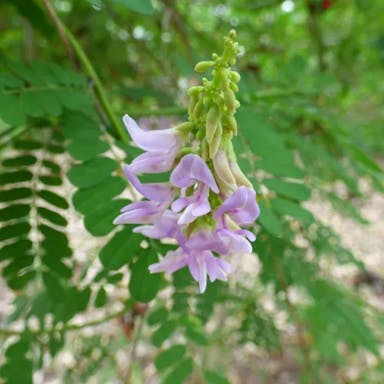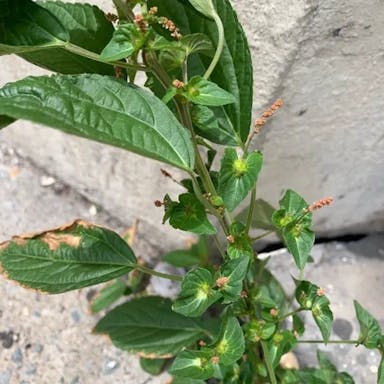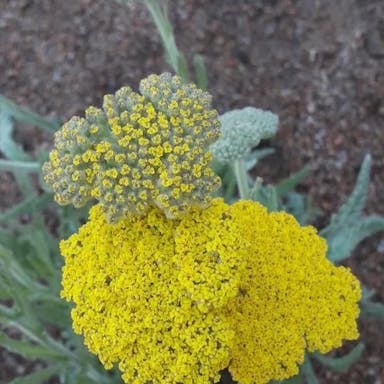The perennial Asparagaceae, referred to by scientists as Ornithogalum umbellatum, is widely cultivated as a decorative flowering plant. This plant, native to areas of Europe and Western Asia, possesses basal leaves in green with lance shapes. Reaching heights up to 30 centimeters, its stem bears dense white blossoms emitting pleasant fragrances. These star-formed flowers with six petals bloom in springtime arranged in umbels, hence its common name. Underground, this bulbous plant increases itself using small, round bulbs nearly 1-2 cm wide. Offsets allow it to spread and form groups over time. Regarding growing conditions, sun to partial shade and well-drained earth suit this hardy plant. It endures varying soil conditions, even thriving in droughts, making it an excellent xeriscaping choice. However, in certain areas it can become invasive, so monitoring its growth prevents uncontrolled spreading.
Garden star-of-bethlehem
- Scientific name
- Ornithogalum umbellatum
Basic Information
- Asparagaceae Family Ornithogalum Genus Garden star-of-bethlehem Species
- Asparagaceae > Ornithogalum > Ornithogalum umbellatum
- 83%
- The Completeness of This Encyclopedia
Please help us complete the encyclopedia, Terrarium is a encyclopedia service to be completed with everyone in the world. Currently, this page is 83% complete. For more information on how to contribute, please click here.
- Forb/herb
- Perennial
- Height
- 30cm ~
- Flower Color
- Leaf Color
- Anthesis
- spring
- Sunlight Exposure
Full Sun Long hours of sunlight from morning to afternoon Partial Shade A location in the shade of a tree or where either the morning or afternoon is shaded Full Shade A place where there is no direct sunlight
- Full Sun
- Hardiness Zones
This is an indicator to know to which zone each plant can winter. Knowing the zone of each plant gives you an idea of the cold temperature resistance when grown in the ground without a roof. 2: -42.7 to -40.0 3: -39.9 to -34.4 4: -34.3 to -28.9 5: -28.8 to -23.3 6: -23.2 to -17.8 7: -17.7 to -12.2 8: -12.1 to -6.7 9: -6.6 to -1.1 10: -1.0 to 4.4 11: 4.5 to 10.0
- 4
- Cold resistance
- Good
- Heat resistance
- Fair
- Habitat of origin
- Europe
- Growth Rate
- Normal
What is Garden star-of-bethlehem (Ornithogalum umbellatum)?
What is Garden star-of-bethlehem (Ornithogalum umbellatum)
Flower meaning
The white-petalled flower language Garden star-of-bethlehem in America conveys purity, innocence. Each delicate blooming flower emblemizes the virtues of innocence, simplicity. Floral arrangements frequently utilize the garden star-of-bethlehem for marriage, baptism events observing new starts, naive loveliness. Unpretentious appearance supplements elegance, grace. Regrettably, no particular birth month/date relates to the Garden star-of-bethlehem. However, the flower's meaning makes it thoughtful present despite birth month.
Calendar of Garden star-of-bethlehem (Ornithogalum umbellatum)
Calendar
The invasive blooming bulb called Ornithogalum umbellatum, which can spread unwittingly, normally grows from April until June. This star-of-bethlehem lasts only fourteen to twenty-one days before it fades. For lengthier blossoms, plant the corms where they get sunlight and drainage. Additionally, fertilizing and watering promote robustness. However, gardeners must take care because certain areas regard the flowers as weeds.
How to grow Garden star-of-bethlehem (Ornithogalum umbellatum)
Watering
The Garden star of Bethlehem plant's optimal water amount and schedule is season-dependent, relying on soil dampness. Give the spreading rapidly and rampantly plant 1-2 water column-inch per seven to ten days when growing in spring and summer, checking soil is evenly moist without waterlogging. Less frequent watering needed when dormant in autumn and winter. Letting soil dry somewhat between rains prevents root rot. Observing soil wetness and conforming water quantity and timing appropriately is fundamental for the wellbeing of the Garden star of Bethlehem plant. The Garden star of Bethlehem is a bulb plant that flowers in late spring or early summer. It has strap-like leaves and spreads rapidly and rampantly by offsets. The flowers are white with green stripes on the underside of each petal. After flowering, seed capsules are produced which split open when ripe.
Soil and Fertilizer
The soil pH should sit between six and seven point five for Garden star-of-the-east, the taxonomic title for Ornithogalum umbellatum. Well-draining dirt containing organic material fosters thriving. Although moisture nourishes roots, overwatering causes decay. At plant awakening in the spring, blend fertilizer with a 10-10-10 or 14-14-14 N-P-K ratio at one tablespoon per square foot. Reapply a slow-release fertilizer each six to eight weeks during growth for steady nutrient delivery. Regularly testing the soil monitors pH and nutrients. Make adjustments to sustain the best environment for the bloom.
Sunlight and Place
Garden star-of-bethlehem is a perennial bulbous plant. It needs shelter during frost. This plant does well with sun but not heat. Keep it between cool and warm temperatures. Shade from hot sun in summer helps. It wants full sun but will be okay with some shade as long as there are 6 or more hours of direct sunlight each day. Well-draining soil is important for this plant. Check plant guides for specifics about care. During winter protect it from extreme cold. Frost will damage the plant. It can survive temperatures down to -10°C but does not do well in heat. 15-25°C is best. Be careful not to overwater. Allow soil to dry out between waterings.
Advanced Information of Garden star-of-bethlehem (Ornithogalum umbellatum)
Pruning
The perennial cultivar Garden star-of-bethlehem derives benefits from reoccurring trimming and diminishing. It is needed in order to sustain the plant's configuration, promote flourishing expansion, and preclude crowdedness. Pruning also assists in removing expired or diseased portions, increasing the total health of the plant. The most favorable time for clipping Garden star-of-bethlehem is late winter or initial spring before contemporary growth starts. Opening this process entails removing any perished or harmed stems, trimming them to robust tissue. For maintaining the plant's magnitude and form, selectively trim the longest stems by removing them to a lateral bud or branch. After pruning, sanitize and disinfect your cutting tools to thwart the proliferation of diseases. Disposing of the clipped matter properly is crucial, since Garden star-of-bethlehem has the potential to be invasive if not controlled correctly. Frequent pruning and diminishing will support preserving the plant's well-being and features. Line breaks every two sentences. The perennial cultivar Garden star-of-bethlehem derives benefits from reoccurring trimming and diminishing. Pruning also assists in removing expired or diseased portions, increasing the total health of the plant. For maintaining the plant's magnitude and form, selectively trim the longest stems by removing them to a lateral bud or branch. After pruning, sanitize and disinfect your cutting tools to thwart the proliferation of diseases. Frequent pruning and diminishing will support preserving the plant's well-being and features. Disposing of the clipped matter properly is crucial, since Garden star-of-bethlehem has the potential to be invasive if not controlled correctly. The most favorable time for clipping Garden star-of-bethlehem is late winter or initial spring before contemporary growth starts. Opening this process entails removing any perished or harmed stems, trimming them to robust tissue.
Planting and Harvest
Star-of-Bethlehem, Ornithogalum, perennial, pots, drainage. Soil, plant, roots, watering, dry. Ground, sun, shade, soil, hole, size, ball, backfill, watering, dry times. Container, repotting, outgrow, current container. Issues like stagnant decline or starved rise. Essential prevent overhydrating, good runoff vital. Check regularly insect or illness, take right act. Shift occasionally slightly larger vessel
Propagation
For multiplying garden star-of-bethlehem dip a leaf's cut end into a mixture. The cutting needs bright light but no direct sun till roots grow above the potting soil. Seeds also grow new plants when planted in the spring or autumn and kept damp. Another technique includes digging up and dividing established clumps, then replanting the sections. Cut some stems as well, remove lower leaves, and push into soil after coating the cut end in powdered hormone. Keep watered and in filtered sun till rooted. Harvesting is unnecessary for propagation.
Pests and Diseases
The bulb mite Rhizoglyphus feeds upon bulbs of the Garden star-of-bethlehem, causing damage. Inspecting bulbs before planting and removing infested plants prevents spread. Narcissus bulb fly larvae eat bulbs, causing rot. Planting in drained soil avoids moist conditions and these flies. Fungal infections like basal rot Fusarium and gray mold Botrytis cause withering. Draining soil, spacing plants, and removing diseased plants prevents fungal spread. Monitoring for pests and diseases, planting properly, and cleanliness prevents Garden star-of-bethlehem problems.
Habitat of Garden star-of-bethlehem (Ornithogalum umbellatum)
Habitat
Toxicity of Garden star-of-bethlehem (Ornithogalum umbellatum)
Health Benefits
- edible
- Inedible
- Toxic
- toxic
NO DATA
Toxic for dogs and cats
NO DATA
Q&A of Garden star-of-bethlehem (Ornithogalum umbellatum)
- How to Get Rid of Garden Star of Bethlehem Weeds?
To efficiently manage spreading of Star of Bethlehem flowers in the yard, also referred to as Ornithogalum umbellatum, combining manual uprooting and chemical agents is suggested. Initially, by hand pull up the flora, being sure to extract the full bulb to avert regrowth. After that, put on an extensive-spectrum pesticide, for instance glyphosate, on the impacted section. Nevertheless, know that this flora possesses high resilience to numerous pesticides, so repeated uses could be essential. Finally, sustain a robust, crowded yard or garden to outdo the unwanted plant. Frequent cutting, irrigating, and fertilizing can assist accomplish this.
- Why Is Garden Star of Bethlehem Considered a Weed?
The scientific name of Garden Star of Bethlehem is Ornithogalum umbellatum. This plant has become a troublesome weed in several areas because it spreads fast and harms local plants. Its bulbs are very hard to remove after they start growing. Due to its quick spreading and persistence, this plant has turned into an issue in lots of gardens and land areas.
- Is there a recommended way to choose Ornithogalum umbellatum?
When considering the Ornithogalum umbellatum cultivation, option seedlings health and sturdiness. Select green stems in good condition. Leave quality and pest signs indicative of future health. Preceding conditions lack relevance. Seeds firmness, color and supplier rank hold lower significance. Assess the overall young plants first. Variations make no difference. Focus on accurate specie identification. Follow appropriate directions for planting and nurturing. This facilitates progress. Split long guidance into short directional parts. Combine short statements into more encompassing instructional segments.












